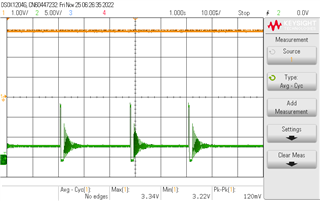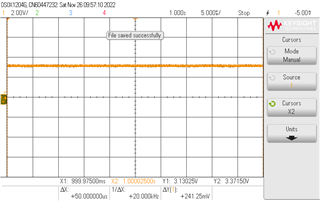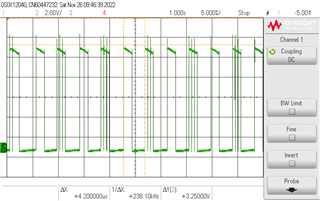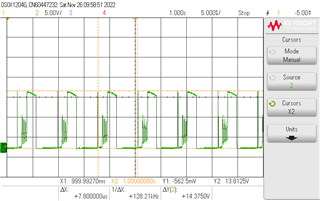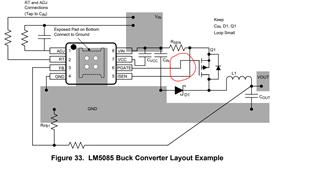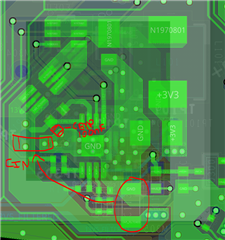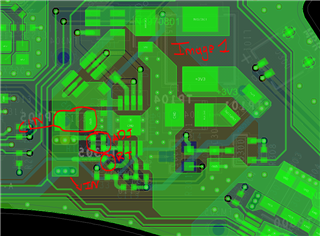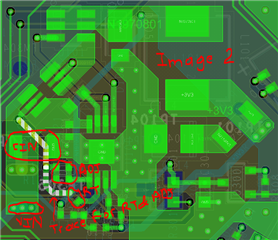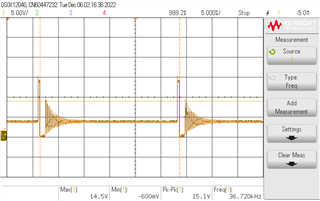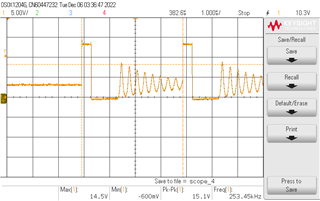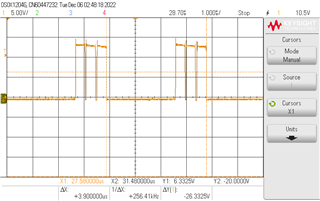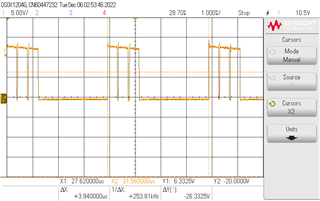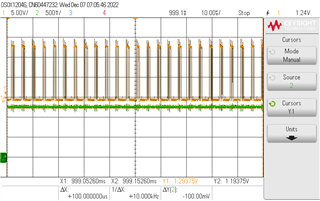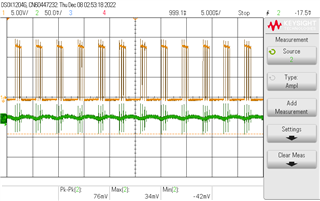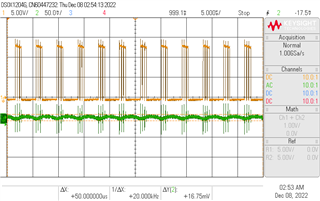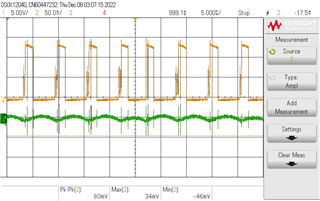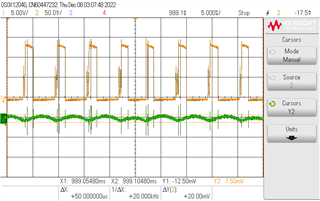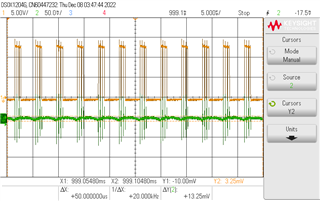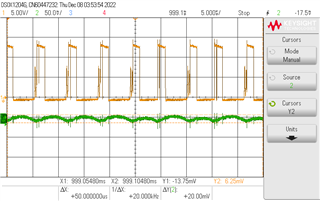Hi TI team.
In some prototypes we designed, and we are testing, the converter is the LM5085, the output voltage should be 3.3V and maximum current are 2A. Input is 13.5V.
But we are not obtaining 3.3V, converter is not working well and that is without the load, we cannot test the converter with load because output voltage is not ok.
I am adding the sch and the waveform of the output voltage (yellow) and feedback voltage (green).
As you can see once we have an input voltage, the converter rises until 3.25V but immediately drops to 1.7V and when input voltage is removed, we have for 100 us 3.25V and then voltage goes low.
So, not sure why this is happened, please check the schematic and let me know if you need more information.



